Shopping SERPs have been looking more like a feed than ranked results for a while now. In December, I wrote about the integration of Google’s shopping tab into the main results for shopping queries in e-commerce shifts. The result is a marketplace that looks more like Amazon than web search results.
SERP features and query refinements play a big role in this transition. They direct users from unrefined searches to finding products as quickly as possible, having an outsized impact on clicks and revenue.
In this deep dive, I analyzed +28,000 shopping SERPs to understand how query refinements work and how e-commerce sites can use them.
It’s a bit early for shopping season, but I’m writing a lot of e-commerce because most shops need some time to make changes on their site (especially the big ones). So, if you want a fruitful 2024, now is the time to get the work on the roadmap.
This piece builds on two analyses I’ve published previously:
1. Growth Memo
A warm welcome to 80 new Growth Memo readers who joined us since last week! Join the ranks of Amazon, Microsoft, Google and 13,400 other Growth Memo readers…
2. Growth Memo
SEO funnel shows the full path from the creation of pages on a website to getting organic traffic…
Boost your skills with Growth Memo’s weekly expert insights. Subscribe for free!
What Are Query Refinements
Query Refinements are “pills” at the top of the search results that help users refine their search. In essence, query refinements are product filters.
First announced at Google Search On 2022, Google explained that refinements (and filters on desktop) follow real-time search trends (bolding mine):
Whole page shopping filters on Search are now dynamic and adapt based on real-time Search trends. So if you’re shopping for jeans, you might see filters for “wide leg” and “bootcut” because those are the popular denim styles right now — but those may change over time, depending on what’s trending.1
Examples of Query Refinements. (Image Credit: Kevin Indig)
The purpose of query refinements is to bring users from the “messy middle” to conversion as quickly as possible as they literally refine the query. When you click on a pill, Google sends users to another SERP, just like when users click the product filters on the left.
To understand how query refinements work and how e-commerce sites can use them to their advantage, I dug up some data.
How Query Refinements Work
I analyzed 28,286 shopping keywords (US, desktop) with seoClarity and found that query refinements:
- follow distinct patterns sites can use for keyword targeting.
- lead to search queries without search volume.
- trigger new AI Overviews on mobile.
Common Refinements
I analyzed which refinements come up most often in “position” one, two and three. Think about position one in this context as the first refinement from the left, which is the most visible.
Most refinements specify gender. The term “women” comes up most often in the top 3, but “men” comes up most often in the first refinement. 45% of query refinements mention one gender at least once, 61.4% if you include kids. It makes sense: before diving into product attributes like color or size, you want to make sure a product is “for you.”
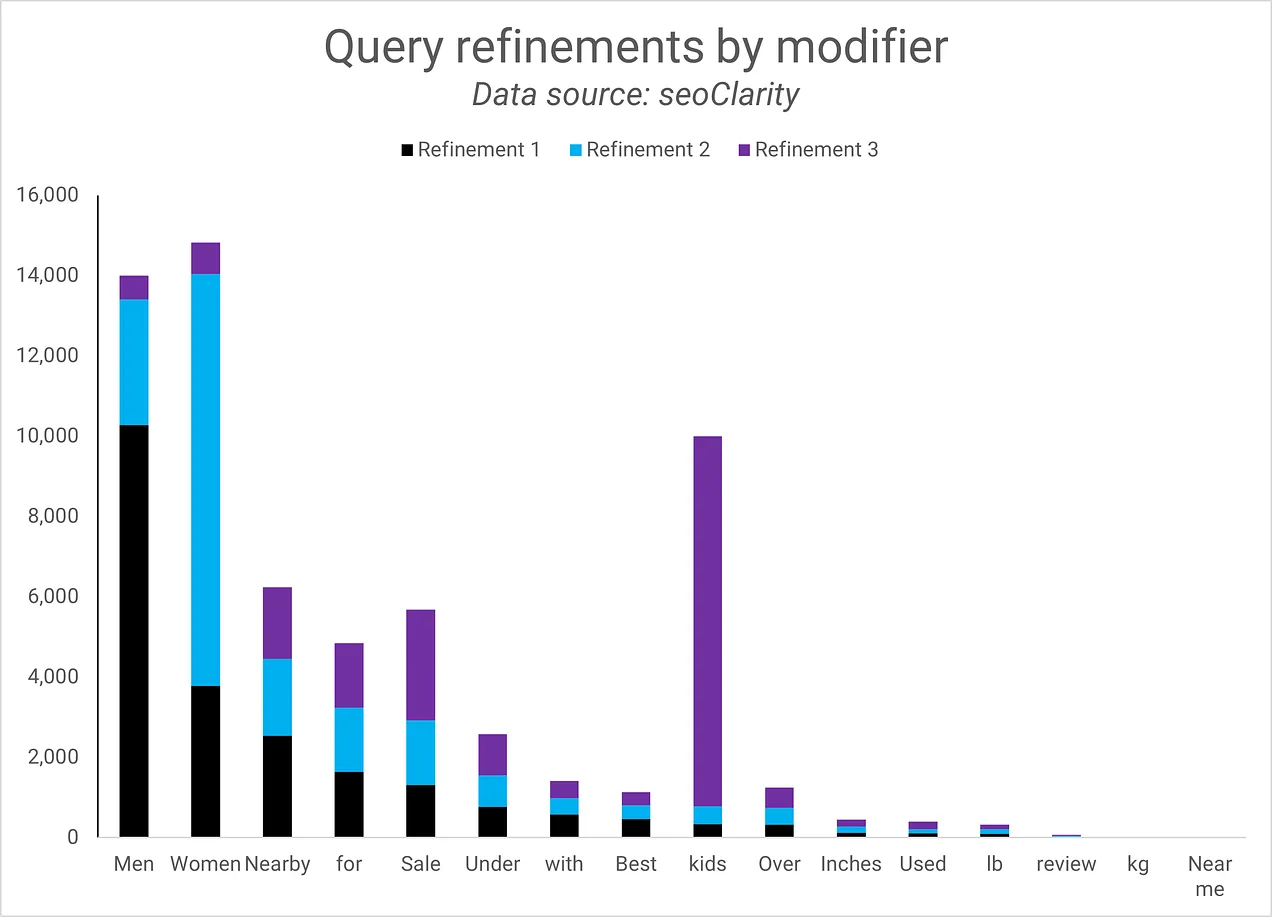 The most common query refinements. (Image Credit: Kevin Indig)
The most common query refinements. (Image Credit: Kevin Indig)The second most common group of refinements is location. Ten percent of the top three refinements include “nearby,” which is much more visible on mobile. Google shows maps by default on mobile devices, as mobile device users are more likely to be on the go.
The third group is attributes around queries that include “for” or “with”, where users try to specify use cases (9.8%), and the fourth is price (9% of refinements include the term “sale”).
Query refinements have a high overlap with product filters on desktops and often feature the first few filters as refinements. Product filters don’t exist on mobile, likely because users might expect the filter sidebar on desktop, but it doesn’t make sense on mobile.
 Product filters (desktop) and query refinements tend to have high overlap. (Image Credit: Kevin Indig)
Product filters (desktop) and query refinements tend to have high overlap. (Image Credit: Kevin Indig)The sorting and visibility of refinements are different on mobile and desktop. Due to the difference in bigger screen size, mobile search results show ~4 refinements on load, while desktop can show over 10.
Since query refinements are based on realtime searches, they also overlap heavily with autosuggest.
 (Image Credit: Kevin Indig)
(Image Credit: Kevin Indig)Interesting Findings
Three insights from the data surprised me:
First, Google keeps refinements strictly focused on product attributes but not user intents. I expected searchers to be interested in opinions and reviews on Reddit, but neither “Reddit” nor “reviews” came up as a refinement a single time.
Two, query refinements exactly match the query, meaning you won’t find synonyms or closely related terms in them. As a result, brands don’t appear in refinements, either.
Three, most query refinements don’t have search volume or a CPC. Only 10,696 / 27,262 keywords in the first refinement have search volume (median = 70), and only 6,514 / 27,262 keywords have a CPC. Since query refinements are based on search behavior, we can conclude that search volume and other keyword planner data are very limited metrics.
AI Overview Refinements
Of course, I came across AI Overviews (AIOs) in my research. For the queries I analyzed, mobile results returned AIOs but desktop doesn’t. An example is brown mascara.
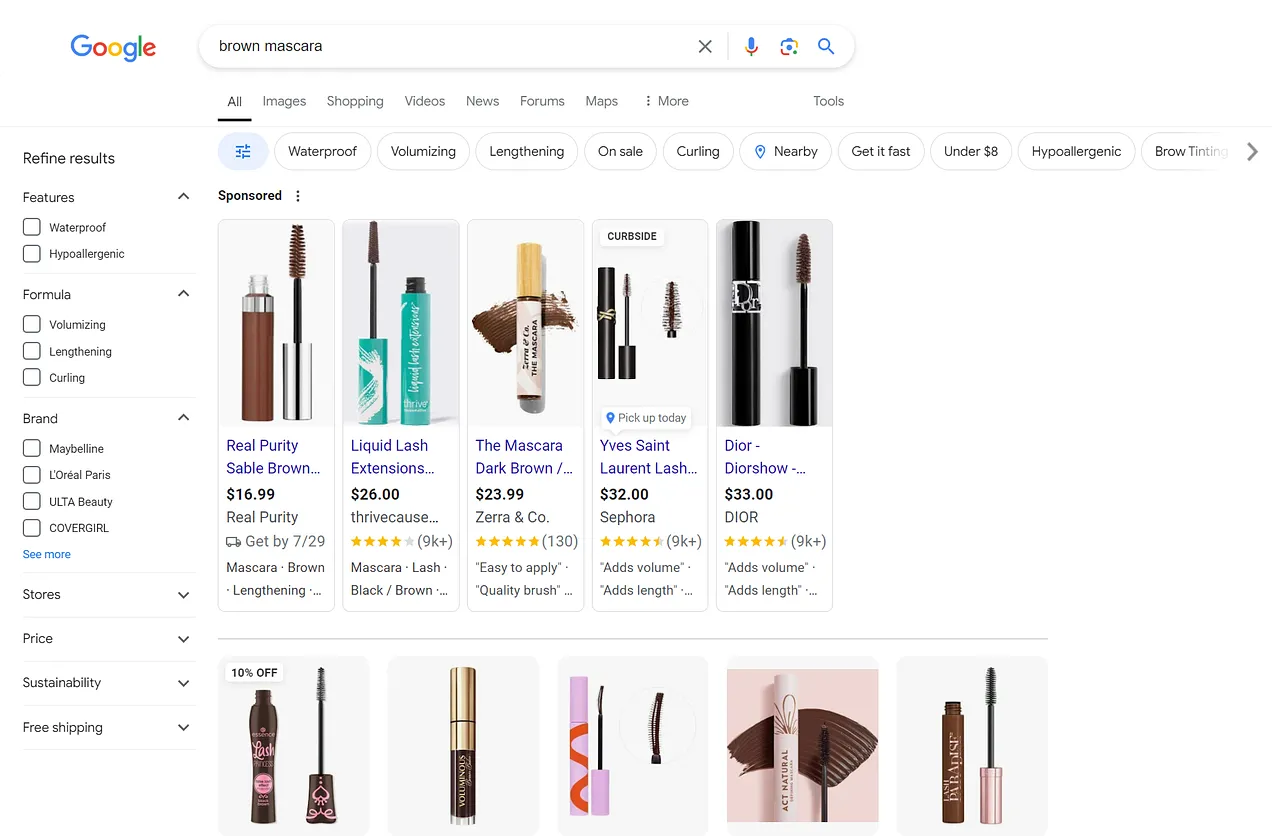 Brown mascara on desktop, no showing an AIO. (Image Credit: Kevin Indig)
Brown mascara on desktop, no showing an AIO. (Image Credit: Kevin Indig)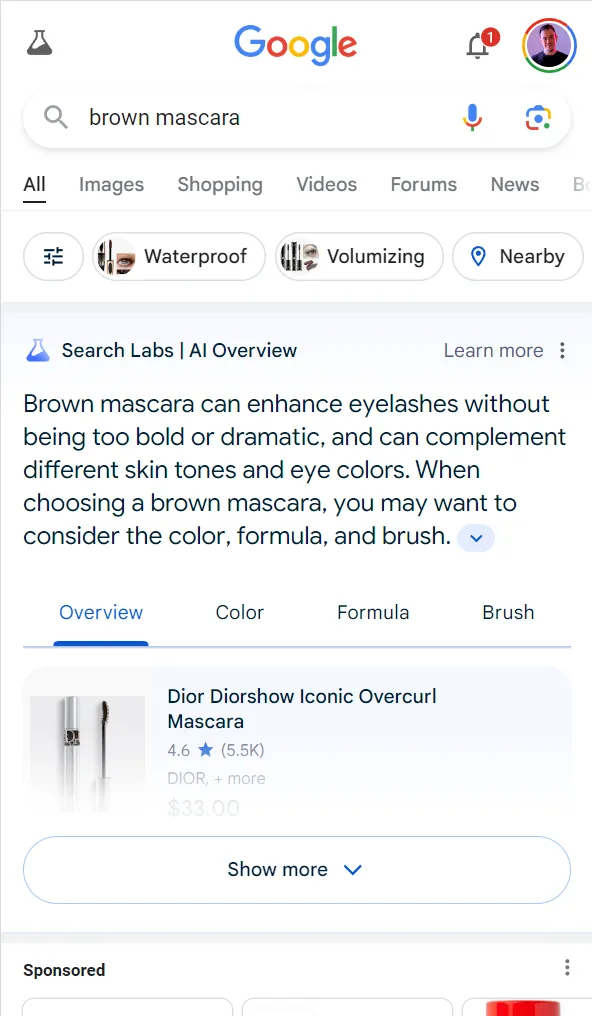 Brown mascara on mobile, triggering an AIO. (Image Credit: Kevin Indig)
Brown mascara on mobile, triggering an AIO. (Image Credit: Kevin Indig)You likely spotted the AIO tabs on the screenshot above, which appear independently of refinements and explain common product attributes.
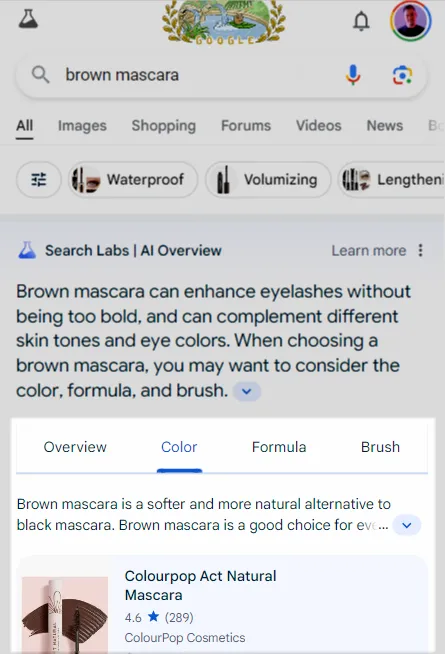 (Image Credit: Kevin Indig)
(Image Credit: Kevin Indig)Notice how the AIO provides additional guidance and information in tabs (see screenshot below).
 (Image Credit: Kevin Indig)
(Image Credit: Kevin Indig)At this point, it’s unclear whether citations in AIO tabs are good because they drive traffic to review articles or bad because they give the answer away.
 (Image Credit: Kevin Indig)
(Image Credit: Kevin Indig)For other queries, like “air compressor”, I was able to spot refinements in the AI Overview instead of above it. Clicking an AIO refinement leads to another search with the refinement in the query. For example, on the SERP for “air compressor”, one refinement is “for painting cars”. Clicking it leads to another SERP for the query “air compressor for painting cars” (with another AIO and tabs but no refinement). Notice that I was logged into the SGE beta, which means those features might not yet be live for every user.
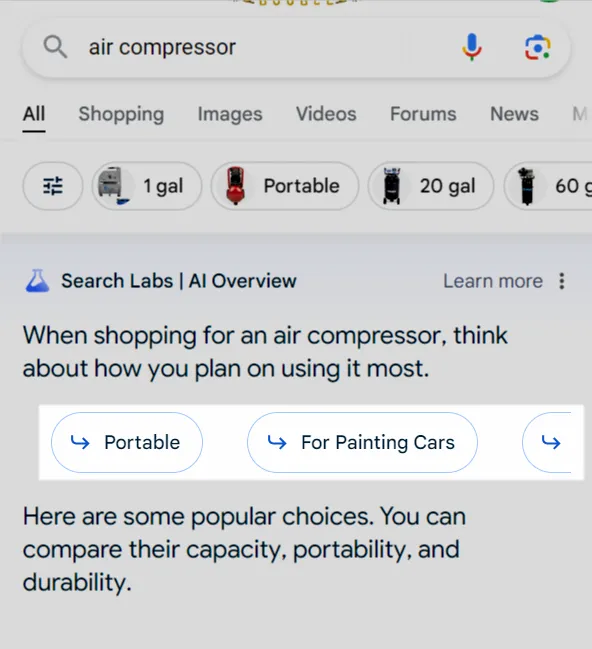 (Image Credit: Kevin Indig)
(Image Credit: Kevin Indig)5 Lessons
5 key lessons surfaced from my analysis of over 28,000 shopping queries:
- You should create specific product and category pages for men/women/kids when it matters for products (e.g. fashion).
- Mine query refinements and autosuggest to find relevant query variations for your keyword research (for example, seoClarity can do this).
- Monitor ranks by query refinement to drive your decisions around facetted indexing (like Nike or Target). Refinements showing different URLs are an indicator of building specific facets.
- You need to identify searcher interest beyond search volume. The fact that more than half of queries don’t have search volume, but query refinements are optimized for search behavior shows that you might miss a lot of opportunities by limiting yourself to queries that have search volume. Instead, leverage onsite search data, surveys and qualitative research to enhance keyword targeting.
- Monitor and compare clicks from desktop and mobile results to understand the impact of product filters (desktop) and AIOs (mobile).





